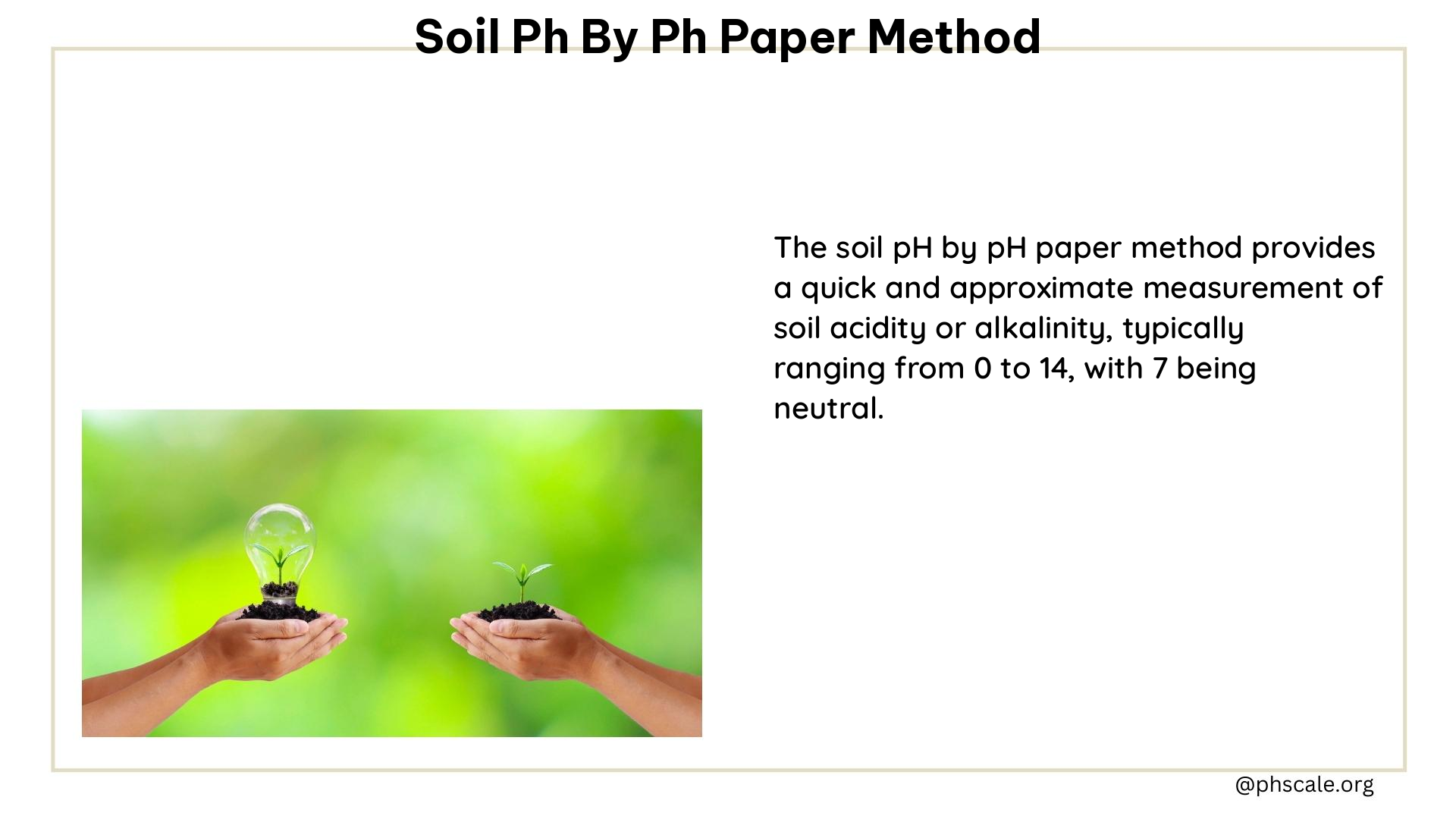Soil pH testing using pH paper is a simple and cost-effective way to determine the acidity or alkalinity of your soil. This method involves mixing a soil sample with distilled water and then using pH paper to measure the pH level. By understanding your soil’s pH, you can make informed decisions about amending and caring for your garden or lawn.
The pH Scale and Soil pH
The pH scale ranges from 0 to 14, with 7 being neutral. Anything below 7 is considered acidic, while anything above 7 is alkaline or basic. Soil pH is a crucial factor in plant growth, as it affects the availability of essential nutrients.
Most plants thrive in a slightly acidic to neutral soil pH, typically between 6.0 and 7.0. However, some plants, such as blueberries and azaleas, prefer more acidic or alkaline soil conditions.
Testing Soil pH with pH Paper

Materials Needed
- pH paper (litmus paper)
- Soil sample
- Distilled water
Procedure
- Collect a small soil sample from the area you want to test.
- Mix the soil with distilled water to create a slurry.
- Dip the pH paper into the soil slurry.
- Compare the resulting color on the pH paper to a pH chart to determine the soil’s pH level.
pH Paper and pH Range
pH papers are infused with indicators that change color based on the pH of the substance they come into contact with. For soil testing, it’s best to use pH paper that covers a range of 4.5 to 10, as this will encompass the typical pH levels found in most soils.
Interpreting the Results and Taking Action
Acidic Soil (pH Below 7)
If your soil pH is below 7, it is considered acidic. This can be beneficial for plants that thrive in acidic conditions, such as blueberries, rhododendrons, and azaleas. However, for most plants, acidic soil may need to be amended with materials like lime or wood ash to raise the pH.
Alkaline Soil (pH Above 7)
If your soil pH is above 7, it is considered alkaline or basic. This can be beneficial for plants that prefer alkaline conditions, such as gardenias and hydrangeas. For plants that prefer a more acidic soil, you may need to add organic matter like compost or peat moss to lower the pH.
Balancing Soil pH
Adjusting the soil pH can be done by adding amendments like lime (to raise pH) or sulfur (to lower pH). The amount of amendment needed will depend on the current pH level and the desired target pH. It’s best to follow the recommendations provided by your local extension office or a soil testing laboratory.
Contaminants and Chemicals
It’s important to note that the accuracy of pH testing can be affected by contaminants in the soil or water used for testing. To minimize interference, use distilled water and clean equipment. Additionally, the presence of chemicals, such as fertilizers, can influence the pH reading, so it’s best to use organic amendments to maintain a balanced soil pH.
Alternatives and Additional Testing
While the pH paper method is a simple and cost-effective way to test soil pH, there are other options available:
- pH Meter: For more accurate and repeated readings, consider using a digital pH meter.
- Soil Texture Test: Evaluate the soil texture by rubbing moistened soil between your fingers to determine if it is sandy, loamy, or clayey.
- Detailed Soil Testing: Contact your local extension office or a soil testing laboratory for a more comprehensive analysis of your soil’s properties, including nutrient levels and other important characteristics.
Helpful Resources
- Video Tutorial: How to Use pH Test Strips to Measure Soil pH
- Soil pH Primer: Understanding the Importance of Soil pH
- Soil Testing Kits: Comprehensive Soil Analysis Kits
References
- The Compost Gardener. (n.d.). Three Easy Soil pH test Methods. Retrieved from https://www.the-compost-gardener.com/soil-ph-test.html
- STEMpedia Education. (n.d.). Measure pH value of Soil. Retrieved from https://ai.thestempedia.com/docs/evive-iot-kit/how-to-measure-ph-value-of-soil/
- Michael Ferrero. (2013, October 26). How to Use pH Litmus Strips to Measure pH in Vegetable Garden Soil. Retrieved from https://www.youtube.com/watch?v=xIz2YPBXuZU
- Birds and Blooms. (2023, April 20). How to Test Your Soil pH and Texture at Home. Retrieved from https://www.birdsandblooms.com/gardening/gardening-basics/basic-soil-test/
- Food and Agriculture Organization of the United Nations. (n.d.). SOIL pH USING INDICATOR STRIPS. Retrieved from https://www.fao.org/fileadmin/user_upload/GSP/GSDP/Field_exercises/pH_strips_EN.pdf.
